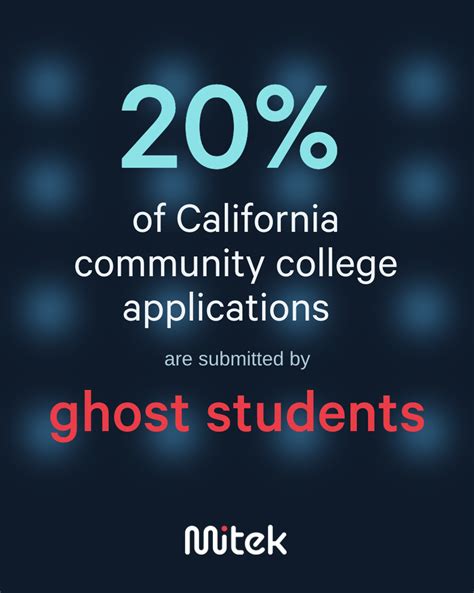
A 79-year-old California woman, Rosalie Manley, was mistakenly detained by U.S. Marshals who believed she was a fugitive wanted for a decades-old crime, leading to her desperate plea for identity verification which ultimately secured her release after nearly a week in custody.
Rosalie Manley, a 79-year-old resident of California, endured a harrowing ordeal after being wrongfully arrested by U.S. Marshals, who mistook her for a fugitive wanted in connection with a crime dating back to the 1970s. The incident sparked outrage and raised questions about the accuracy and protocols used in identity verification processes within law enforcement agencies. Manley’s detention, which lasted for nearly a week, ended only after she persistently pleaded with authorities to confirm her true identity, a plea that was eventually heeded, leading to her release.
The events unfolded unexpectedly when U.S. Marshals arrived at Manley’s residence with an arrest warrant. The warrant identified the suspect as someone wanted for charges related to a crime committed several decades ago. Despite Manley’s initial protests and claims of mistaken identity, she was taken into custody and held while authorities worked to verify her identity. During her detention, Manley repeatedly asserted her innocence and implored the Marshals to conduct a thorough investigation to confirm that she was not the individual named in the warrant.
According to Manley, the experience was both frightening and bewildering. “I kept telling them, ‘You’ve got the wrong person,'” she recounted in an interview following her release. “I showed them my driver’s license, my social security card, anything I could think of to prove who I am, but it wasn’t enough. It was like I was invisible.”
The breakthrough came after Manley’s persistence and the intervention of her family and legal representatives. They provided additional documentation and evidence to support her claims of mistaken identity. After a review of the evidence, the U.S. Marshals Service confirmed that they had indeed apprehended the wrong person. Manley was subsequently released from custody, bringing an end to her days-long nightmare.
The case has prompted a critical examination of the procedures used by law enforcement agencies to identify and apprehend suspects. Experts in law enforcement and civil rights advocates have raised concerns about the potential for errors and the need for more rigorous verification methods. They argue that the reliance on outdated or incomplete information can lead to wrongful arrests and detentions, causing significant harm to innocent individuals.
The U.S. Marshals Service has acknowledged the error and expressed regret for the distress caused to Manley. In a statement, a spokesperson for the agency said, “We take these matters seriously and are reviewing our procedures to prevent similar incidents from occurring in the future.” The agency has also committed to providing Manley with any assistance necessary to address the impact of her wrongful detention.
This incident highlights the importance of accurate identification in law enforcement and the potential consequences of mistakes. It also underscores the need for ongoing improvements in the systems and processes used to verify identities and ensure that innocent individuals are not subjected to unjust treatment. The case serves as a reminder of the human cost of errors in the justice system and the importance of upholding the rights of all individuals.
Detailed Background and Context
The mistaken arrest of Rosalie Manley underscores a critical challenge in law enforcement: ensuring accurate identification while executing warrants and apprehending suspects. In an era of readily available technology and vast databases, it might seem improbable that such errors occur. However, the reality is that outdated records, similarities in names or physical characteristics, and reliance on incomplete information can contribute to misidentification, leading to wrongful arrests and detentions.
The U.S. Marshals Service, the agency responsible for apprehending fugitives and serving warrants, faces the daunting task of tracking down individuals who may be actively evading law enforcement. Their work often involves complex investigations, cross-jurisdictional coordination, and the use of various databases and intelligence sources. Despite their expertise and resources, the potential for errors remains.
In Manley’s case, the warrant was based on a decades-old crime, which means that the information available to the Marshals Service may have been limited or outdated. The suspect’s physical appearance may have changed over time, and records may not have been updated to reflect these changes. Additionally, if the suspect had used aliases or provided false information in the past, it could have further complicated the identification process.
The fact that Manley was able to eventually convince the authorities of their mistake underscores the importance of due process and the right to be heard. However, the days she spent in detention were undoubtedly traumatic and disruptive to her life. The emotional and psychological impact of wrongful arrest can be profound, leading to anxiety, stress, and a loss of trust in the justice system.
The Role of Identity Verification
Identity verification is a fundamental aspect of law enforcement, serving as the cornerstone for distinguishing individuals, executing warrants, and maintaining public safety. The process typically involves a combination of documentary evidence, such as driver’s licenses, social security cards, and birth certificates, along with biometric data, including fingerprints and photographs. However, the effectiveness of identity verification depends on the accuracy and reliability of the information available, as well as the protocols and procedures used by law enforcement agencies.
In recent years, advancements in technology have offered new tools for identity verification, such as facial recognition software and automated fingerprint identification systems (AFIS). These technologies can quickly compare an individual’s features against a database of known offenders, potentially reducing the risk of misidentification. However, these technologies are not foolproof, and their accuracy can be affected by factors such as image quality, lighting conditions, and the size and diversity of the database.
Moreover, the use of facial recognition technology has raised privacy concerns, particularly regarding the potential for misuse and the risk of bias. Studies have shown that facial recognition algorithms can be less accurate when identifying individuals from certain demographic groups, leading to concerns about discriminatory outcomes. Therefore, it is essential that law enforcement agencies use these technologies responsibly and ethically, with appropriate safeguards to protect individuals’ rights.
Legal and Ethical Considerations
The wrongful arrest of Rosalie Manley raises important legal and ethical considerations about the balance between law enforcement’s duty to apprehend criminals and the protection of individual rights. The Fourth Amendment to the U.S. Constitution protects individuals from unreasonable searches and seizures, requiring that warrants be based on probable cause and supported by oath or affirmation. This means that law enforcement agencies must have a reasonable basis for believing that a person has committed a crime before arresting them.
In cases of mistaken identity, the question arises as to whether the arrest was based on probable cause. If the authorities had a reasonable belief that Manley was the individual named in the warrant, based on the information available to them at the time, then the arrest may have been lawful, even if it turned out to be a mistake. However, if the authorities failed to conduct a thorough investigation or ignored evidence that suggested Manley was not the person they were looking for, then the arrest may have violated her Fourth Amendment rights.
Furthermore, the length of Manley’s detention raises questions about due process. The Fifth Amendment to the U.S. Constitution guarantees that no person shall be deprived of life, liberty, or property without due process of law. This means that individuals have the right to be informed of the charges against them, to have an opportunity to present a defense, and to have a fair and impartial hearing. In Manley’s case, she was held for nearly a week before her identity was verified, which raises concerns about whether she was afforded due process.
Impact on Public Trust
Incidents of wrongful arrest can have a significant impact on public trust in law enforcement. When innocent individuals are subjected to unjust treatment, it can erode confidence in the justice system and create a sense of fear and distrust. This is particularly true in communities that have historically experienced disproportionate levels of police misconduct or racial profiling.
To maintain public trust, it is essential that law enforcement agencies are transparent and accountable for their actions. This includes acknowledging errors, conducting thorough investigations, and implementing policies and procedures to prevent similar incidents from occurring in the future. It also requires that officers are properly trained on identity verification techniques and that they are held accountable for any violations of individuals’ rights.
The Importance of Advocacy and Legal Representation
In cases of wrongful arrest, advocacy and legal representation can play a crucial role in protecting individuals’ rights and ensuring that they are treated fairly. Attorneys can help individuals understand their legal rights, gather evidence to support their claims, and negotiate with law enforcement agencies on their behalf. They can also file lawsuits if necessary to seek compensation for any damages suffered as a result of the wrongful arrest.
In Manley’s case, the intervention of her family and legal representatives was instrumental in securing her release. They provided additional documentation and evidence to support her claims of mistaken identity, and they advocated on her behalf with the U.S. Marshals Service. Without their efforts, it is possible that Manley would have remained in custody for a longer period of time.
Moving Forward: Lessons Learned and Recommendations
The wrongful arrest of Rosalie Manley offers several important lessons for law enforcement agencies and policymakers. These include the need for:
-
Improved Identity Verification Procedures: Law enforcement agencies should review and update their identity verification procedures to ensure that they are accurate, reliable, and consistent with best practices. This may involve incorporating new technologies, such as facial recognition software and automated fingerprint identification systems, while also addressing potential biases and privacy concerns.
-
Enhanced Training for Officers: Law enforcement officers should receive comprehensive training on identity verification techniques, including how to properly use databases, interpret documents, and assess the credibility of information. They should also be trained on the importance of respecting individuals’ rights and avoiding bias.
-
Increased Transparency and Accountability: Law enforcement agencies should be transparent about their policies and procedures, and they should be accountable for their actions. This includes acknowledging errors, conducting thorough investigations, and implementing disciplinary measures when necessary.
-
Independent Oversight: Independent oversight bodies can play a crucial role in monitoring law enforcement agencies and ensuring that they are adhering to best practices. These bodies can investigate complaints of misconduct, review policies and procedures, and make recommendations for improvement.
-
Community Engagement: Law enforcement agencies should engage with the communities they serve to build trust and foster positive relationships. This can involve hosting community meetings, participating in local events, and partnering with community organizations.
Conclusion
The case of Rosalie Manley serves as a stark reminder of the potential for errors in the justice system and the importance of safeguarding individual rights. While law enforcement agencies face the challenging task of apprehending criminals and maintaining public safety, they must do so in a manner that is fair, accurate, and respectful of the rights of all individuals. By implementing the recommendations outlined above, law enforcement agencies can reduce the risk of wrongful arrests and build greater trust with the communities they serve. The balance between effective law enforcement and the protection of individual liberties is crucial for a just and equitable society. The experience of Rosalie Manley reinforces the constant need for vigilance and improvement within the systems designed to protect and serve.
Frequently Asked Questions (FAQ)
1. What exactly happened to Rosalie Manley?
Rosalie Manley, a 79-year-old woman, was mistakenly arrested by U.S. Marshals who believed she was a fugitive wanted for a decades-old crime. She was detained for nearly a week before authorities confirmed her identity and released her. The Marshals had an arrest warrant for someone else, and wrongly identified Manley as that person.
2. Why was Rosalie Manley mistaken for a fugitive?
The exact reasons for the mistaken identity are not fully clear from the Yahoo News article. However, contributing factors likely include outdated records, similarities in names or physical characteristics between Manley and the actual fugitive, and reliance on incomplete or inaccurate information by the U.S. Marshals Service. The warrant itself was based on a very old crime, making accurate information even harder to come by.
3. What steps are being taken to prevent similar incidents in the future?
The U.S. Marshals Service has acknowledged the error and stated that they are reviewing their procedures to prevent similar incidents from occurring in the future. While the specific details of these procedural reviews are not outlined in the provided article, one could reasonably expect that the review would encompass identity verification protocols, database accuracy, and training for officers. Suggestions from other legal experts suggest the implementation of biometric validation during the initial stages of arrest.
4. What legal rights does someone have if they are wrongfully arrested?
If someone is wrongfully arrested, they have several legal rights under the U.S. Constitution. These include the right to due process under the Fifth Amendment (the right to be informed of the charges and have a fair hearing) and protection against unreasonable searches and seizures under the Fourth Amendment. They also have the right to legal representation, and may be able to pursue legal action for damages resulting from the wrongful arrest, such as emotional distress, financial losses, and reputational harm.
5. How did Rosalie Manley eventually get released?
Rosalie Manley was released after she persistently pleaded with authorities to confirm her identity and after her family and legal representatives provided additional documentation and evidence to support her claims of mistaken identity. After reviewing this evidence, the U.S. Marshals Service confirmed that they had indeed apprehended the wrong person and subsequently released her. Her persistent efforts to assert her identity and the support of her family were pivotal in her eventual release.









